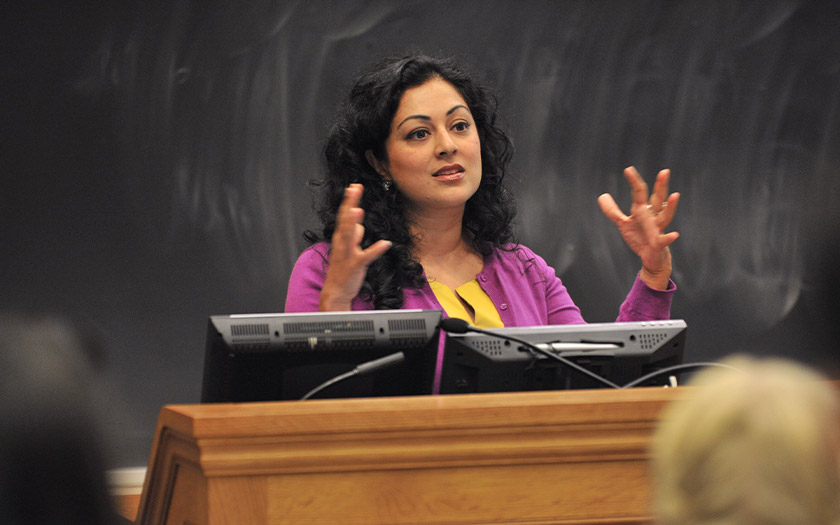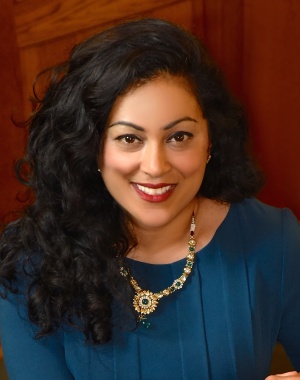
Pursuing energy and climate innovations grows ever more critical, but must include the involvement and participation of marginalized, vulnerable communities from the beginning.
That's the message Ford School professor and director of the Science, Technology, and Public Policy Program Shobita Parthasarathy brought to federal lawmakers last week, when she testified before the U.S. House Appropriations Subcommittee on Energy and Water Development, and Related Agencies. She told them too often such communities are "unable to access the benefits of science and technology, but may be disproportionately subject to the harms."
She discusses her message, the reception to it and ways to put words into action.
Let's start where you ended your testimony: "We need to incorporate the expertise of vulnerable communities and social scientists at the outset." How best do you see this approach taking shape? Where, for example, have you seen it done well?
The key is to bring the expertise of vulnerable communities and social scientists into every stage of the research and development process, and integrate it with technical expertise. This has to start with an integrated approach to government research funding. Agencies like the Department of Energy have to fund partnerships between scientists and communities, and interdisciplinary proposals between scientists, engineers and social scientists, if it really cares about addressing equity in innovation.
We also need more of this expertise within the agency itself. If we wait until after the science and technology has been done, we’ll be too late. One place where this is being done well is in the city of Flint. After the contamination of its water supply, African American leaders saw that researchers from all over the world were flocking to the city to conduct research and they wanted to make sure that community needs and priorities were respected. So they created the Healthy Flint Research Coordinating Center, which now reviews and has to approve all research conducted in Flint. Leaders wanted to ensure that research centered community voices and expertise. If the center approves a proposal, then they really support it by helping to elicit participation and even funding.
During your testimony, you said "the social and equity implications of innovation are much more predictable than we tend to think," which cited your research critical of facial recognition technology in schools. Can you describe what you mean by predictable implications and how that might relate to equity in energy and climate innovation?
We tend to assume that the consequences of emerging science and technology are unpredictable, and this becomes a justification for a laissez-faire approach. But researchers, including myself, have shown repeatedly we actually can anticipate the implications of emerging technologies, and this can help guide design, implementation and regulation to maximize societal benefit and minimize risks.
For example, in August 2020 U-M's Technology Assessment Project (which I direct) released a report on the use of facial recognition technology in schools, and we found that by looking at historical examples of similar technologies (e.g., metal detectors, closed-circuit television) we could predict the consequences of this new intervention. And in the months since that report, we've already been proven right: We've seen how the use of facial recognition technology for virtual learning has discriminated against students of color and disadvantaged nonconforming students.
In the case of energy and climate innovation, we can look at historical cases to sensitize us to current challenges. We know that even when it comes to energy systems, lower income neighborhoods and historically disadvantaged communities of color are often neglected, they have limited power and autonomy, and they are often subject to disproportionate levels of surveillance. This is likely to repeat itself even with renewable energy, unless we take action early. We’ve already seen community-based solar projects on Native American reservations and in Puerto Rico that are designed to increase empowerment and community resilience, on the people’s terms.
What struck you about the hearing, positive or negative? Did you find any common ground or bipartisanship among lawmakers in a time when that's known to be in short supply?
It was a fascinating experience! I was struck by the collegiality of the committee members, especially in this era of polarization. Their questions were sincere and serious, and they were quite knowledgeable even on technical details.
I was also impressed by their connection to their home districts. So many of them talked about the communities they represented, or the major laboratories or universities in their areas. The experience was heartening.
Lawmakers seemed receptive and supportive. One of them, Republican U.S. Rep. Mike Simpson of Idaho, said he'd like to sit down with you and discuss "the challenges we face." Given the chance to expand on your testimony and perhaps influence policy, what more would you like to offer?
A few of them expressed interest in further discussions, so I’m curious to see what happens next. The big challenge is that the Department of Energy is a huge agency with enormous scope even in its science and innovation-focused programs. The key is to figure out how to integrate equity considerations—through expertise of communities and social scientists—even at the earliest stages.
We are at an unprecedented moment: The Biden administration has prioritized equity throughout the government, including through the Justice40 Initiative. The Department of Energy has hired the first deputy director for energy justice. But we need to make sure that those efforts don’t become just window dressing, that they actually change the core of research and development efforts.
I believe we can do this by changing our understanding of whose knowledge and expertise is relevant to our renewable energy transition, and creating programs that embody this.
This Q&A was prepared by Michigan News.
